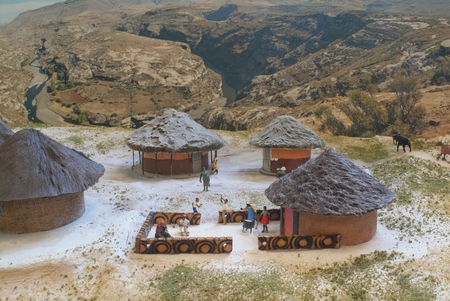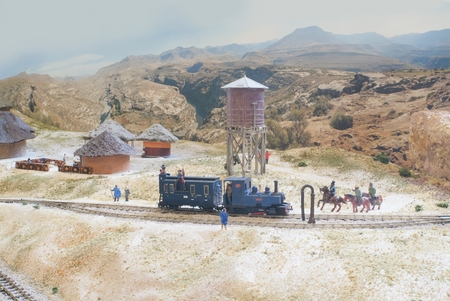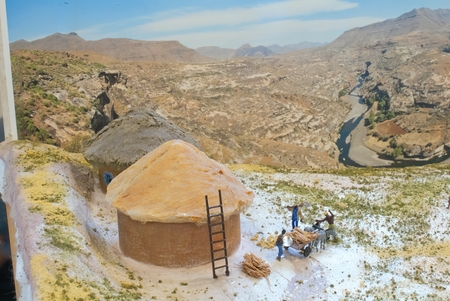Southern Africa in the early 20th century – minerals aplenty, tension between Britain and Boers, and the majority of the population unrepresented. In the mountainous middle, the little British protectorate of Basutoland :
Let us imagine that, in a fit of imperial extravagance, the British drove a line from the sea through the Maluti mountains of Lesotho, to the interior of South Africa. Conveniently there was a 2 ft gauge line heading in the right direction out of Port Shepstone, so that settled the gauge. Garratts and NG15s therefore trundle through from tunnel mouth to tunnel mouth:
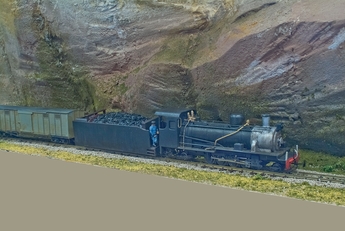
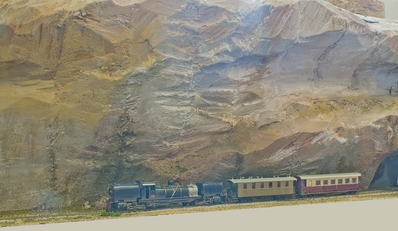
Meanwhile, diamonds had been discovered in the mountains, and a mining company was desperate to have access. The local chief lived up in the mountains, in a beautiful spot en route to the diamonds:
He was well aware of developments elsewhere in the British Empire, including the railway lines of Indian maharajahs. So he did a deal with the mining company – permission to mine, subject to a narrow gauge branch through the chief’s village. The company gritted their teeth and curled a line up to the village and on to the mine. To cope with the gradients, it had to zigzag up the mountainside, permitting only the shortest of trains.:

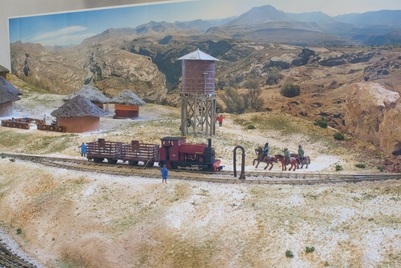
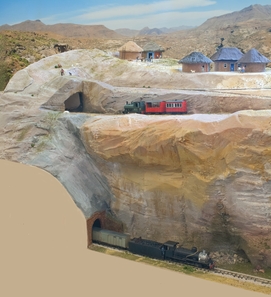
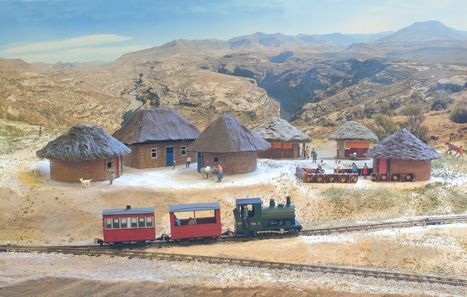
Security is always a problem for diamond mines. A one-coach train, with sharpshooters riding shotgun, carried the precious load:
But even so, some smugglers were spectacularly successful, carrying their ill-gotten gains away on a donkey cart:
The layout itself is 5ft by 3ft. The lower section is in an oval, with three hidden loops. The upper branch runs from one cassette up the reversing loops, and under the rock arch to another cassette. Operators must wear the genuine Lesotho hat:
Lesobeng at the Oxfordshire group Open Day 2016
Photos by Andrew Burnham for Continental Modeller
To see full size pictures click here to go to the photobucket album for Lesobeng.
